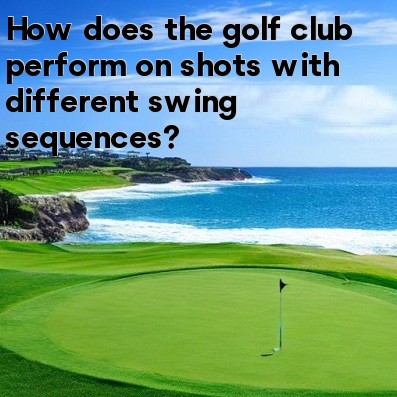
In Golf, How Does the Golf Club Perform on Shots with Different Swing Sequences?
When it comes to golf, the swing sequence plays a crucial role in determining the performance of the golf club during shots. Golfers employ various swing sequences, each having its own impact on the ball's trajectory, distance, and accuracy. Let's take a closer look at how the golf club performs with different swing sequences:
- Classic Swing Sequence: The classic swing sequence is one of the most commonly used techniques in golf. With this sequence, the golfer initiates the swing by turning the shoulders, followed by the arms, and then the lower body. This sequential movement creates a natural rhythm and allows for better synchronization between different body parts. The golf club, in this case, performs optimally as it follows the swing sequence, generating power and control.
- Reverse Swing Sequence: The reverse swing sequence, as the name suggests, is the opposite of the classic sequence. Here, the golfer initiates the swing with the lower body, followed by the arms, and finally the shoulders. This sequence requires a slightly different timing and rhythm compared to the classic sequence. The golf club's performance on shots with reverse swing sequences may be different, often resulting in different ball flight and distance.
- Power Swing Sequence: The power swing sequence focuses on generating maximum power and distance with the golf club. Golfers who employ this sequence prioritize speed and strength, often using a faster tempo and a more aggressive downswing. The golf club's performance on shots with power swing sequences is characterized by increased clubhead speed and longer distances. However, accuracy may be compromised to some extent due to the emphasis on power.
- Control Swing Sequence: In contrast to the power swing sequence, the control swing sequence prioritizes accuracy and consistency. Golfers who adopt this sequence aim for controlled shots, focusing on maintaining a steady tempo and rhythm throughout the swing. The golf club's performance with control swing sequences emphasizes precision, resulting in shots that are more accurate, but potentially sacrificing some distance compared to power swings.
Different swing sequences necessitate adjustments in how the golfer approaches shots. The golf club's performance, therefore, is influenced by the specific swing sequence utilized. It is important for golfers to understand their preferred swing sequence and its impact on the club's performance. Regular practice and experimentation with different swing sequences can help golfers find the approach that suits their personal style and goals.
It is worth noting that factors such as shot type (e.g., drive, iron shot, chip), golf club selection, and individual variations in technique also contribute to the overall performance of the golf club. No swing sequence is inherently superior to others, as each has its own advantages and limitations. Ultimately, finding the right balance between power, control, and consistency is key to optimizing the golf club's performance on shots.
In conclusion, the golf club's performance is greatly influenced by the swing sequence employed by the golfer. Whether it is the classic sequence, reverse sequence, power sequence, or control sequence, each has a unique impact on the club's performance in terms of ball flight, distance, and accuracy. Understanding one's preferred swing sequence and its effects on the golf club can help golfers fine-tune their technique and achieve better results on the course.





